Cossall - The Robbinetts Arm (Flora & Fauna)
w/e 30 January 2005
All this week's pictures were taken
with a Kodak DX6490
On the outward
journey along the Robbinetts Arm we had been looking at the
scenery and general views of the area but as we began to retrace
our steps to the car park, we became more aware of the flora
and fauna.
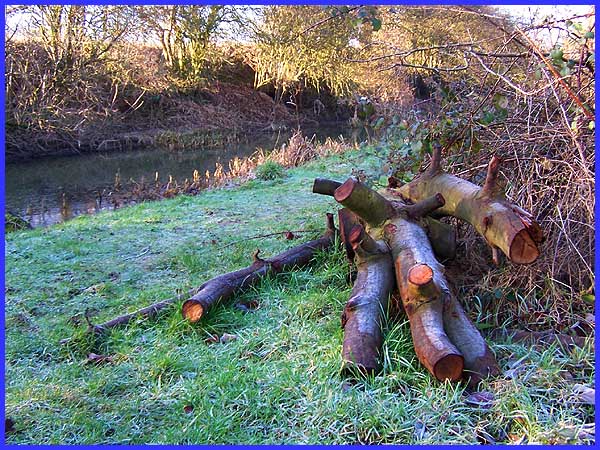
We noticed a number of logs near the far end of the Arm and realised
that this was not the first woodpile that we had passed. It suggested
that they had been placed deliberately as woodpiles like this
make excellent habitats for hibernating insects. Although nothing
was visible on the frosty ground, beetles, ants, wasps, spiders
are just a few of the insects that can overwinter in wood and
no doubt mice, voles and other small mammals also enjoy the nooks
and crannies of the shelter.
|
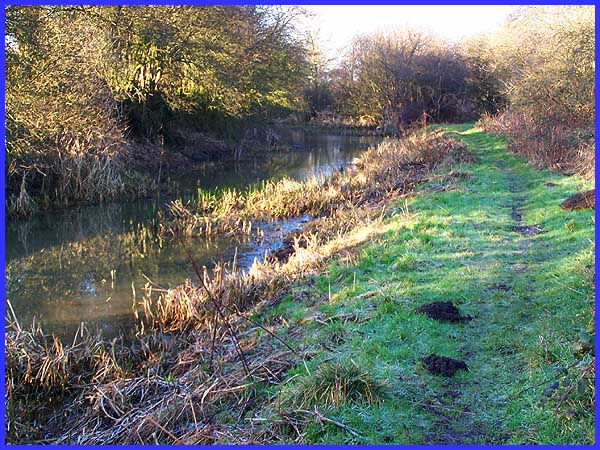
Nearby on the towpath, there were several ridges characteristic
of another small mammal, the mole. These small burrowing creatures
with pointed snouts, velvet fur and long, powerful claws on their
front legs dig below the surface of the ground in their search
for food, pushing the earth back behind them and, when close
to the surface, produce molehills like these seen here.
|
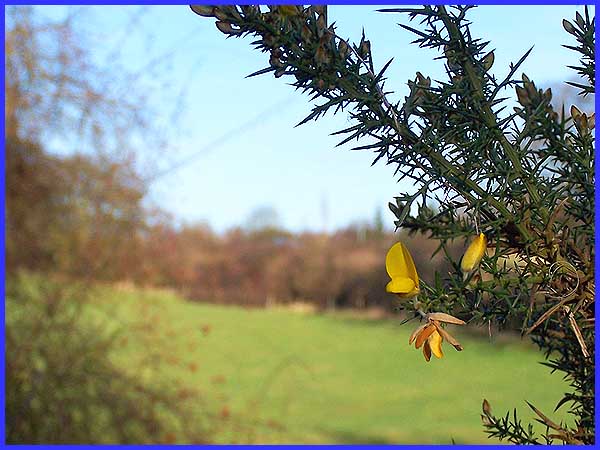
The hedgerows along the Robbinetts Arm are quite drab at this
time of year but early yellow flowers on some gorse added a splash
of colour. Gorse is a perennial, evergreen shrub of the legume
family with spinelike leaves and although it can flower throughout
the year, it usually produces flowers in late winter or early
spring (Jan – Mar) attracting bees, who are the primary
pollinators, to this early season source of pollen.
|
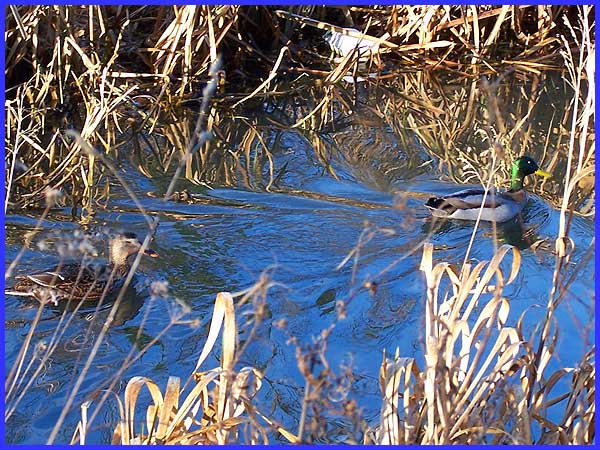
In the overgrown canal itself, we spotted a number of waterfowl
including coots and ducks whilst three geese circled overhead.
Here paddling swiftly in the icy water we saw a pair of mallards
making their way between the reeds and bulrushes. Male mallards
are easily distinguishable with their dark green heads and yellow
bills, whilst the female of the species is mainly brown with
an orange bill. In the UK mallards may be either resident breeders
or migrants with birds from Iceland and northern Europe spending
the winter here. Feeding on acorns, berries, plants, insects
and shellfish, they are a common sight in wetland areas.
|
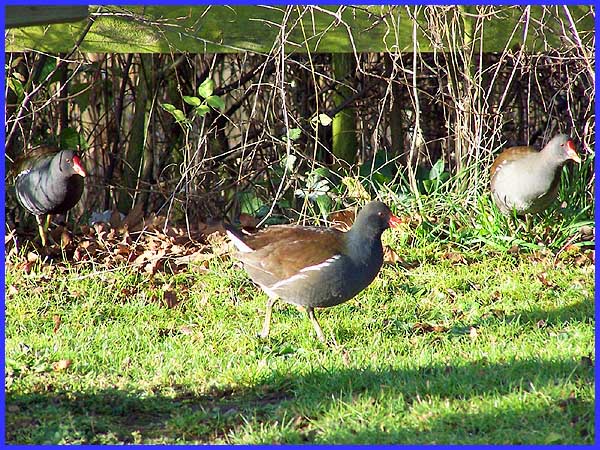
As we neared the end of our walk, a group of birds emerged from
the hedge and started pecking at the ground. At first we thought
they were coots but a closer look showed they were in fact moorhens.
The name moorhen is misleading being a corruption of mirehen
or marshhen, which gives a much truer picture of its natural
habitat. It feeds on water plants, seeds, fruit, grasses, insects,
snails and worms. It is very similar in appearance to its larger
cousin the coot, but the coot is all black with a white beak
while the moorhen has a brownish body with a white stripe and
a distinctive red bill with a yellow tip.
|
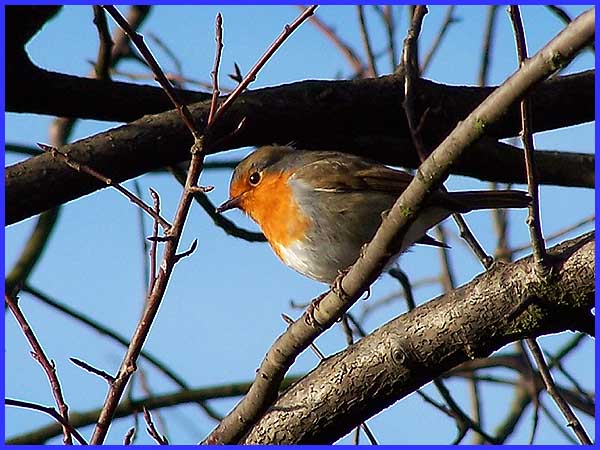
Reputed to be the UK's favourite bird, the easily identifiable
robin with its bright red breast can usually be found in woodlands,
parks hedgerows and even gardens with plenty of undergrowth.
These territorial birds eat worms, seeds, fruits and insects
and they sing throughout the year. Towards the end of December
robins begin to explore other robins' territories as they look
for a mate and by mid-January the majority will be paired. As
we changed our shoes and prepared to leave, this solitary robin
settled in the hedge, sat and watched. Whether or not it was
still looking for a mate or was just in search of food I don't
know, but it seemed quite content to sit and be photographed.
In the past whenever I have tried to photograph robins, I have
never had much success - the images were often out of focus or
the bird had flown but this time I think it has turned out quite
well. It has also caused me to ponder the origin of the name
"Robbinetts" - in the dim and distant past, could it
have had something to do with our feathered friends? I don't
suppose I shall ever know for certain but . . . .
|

